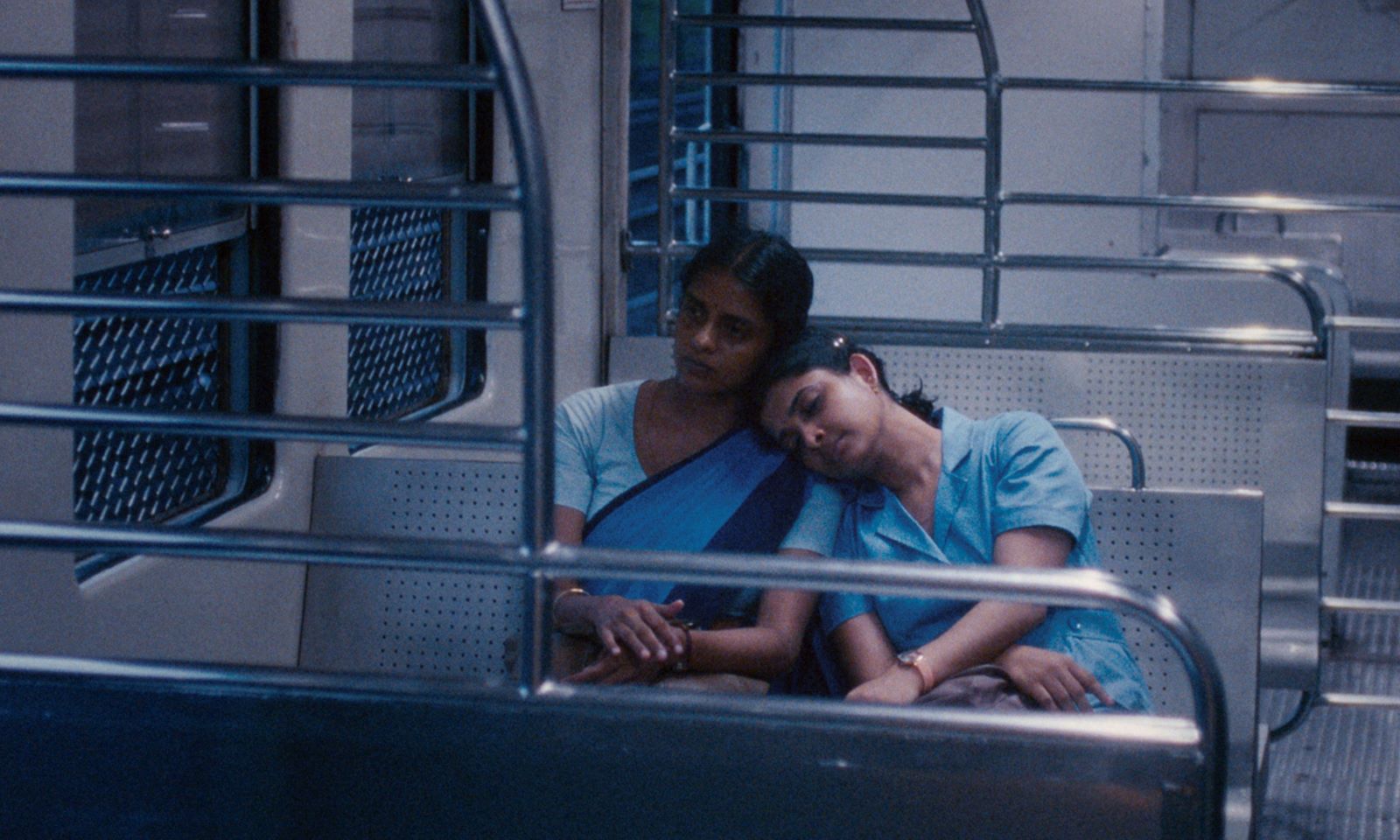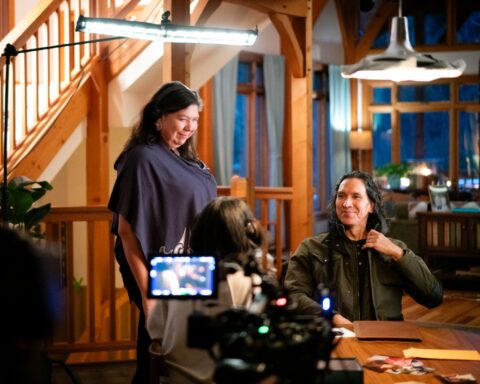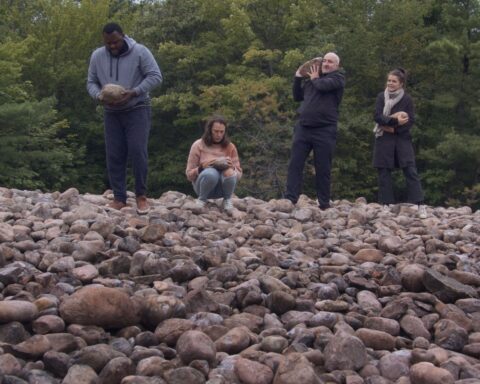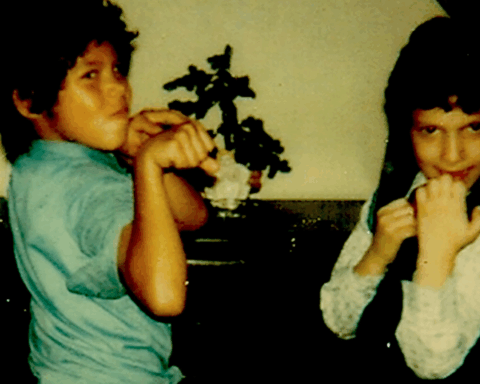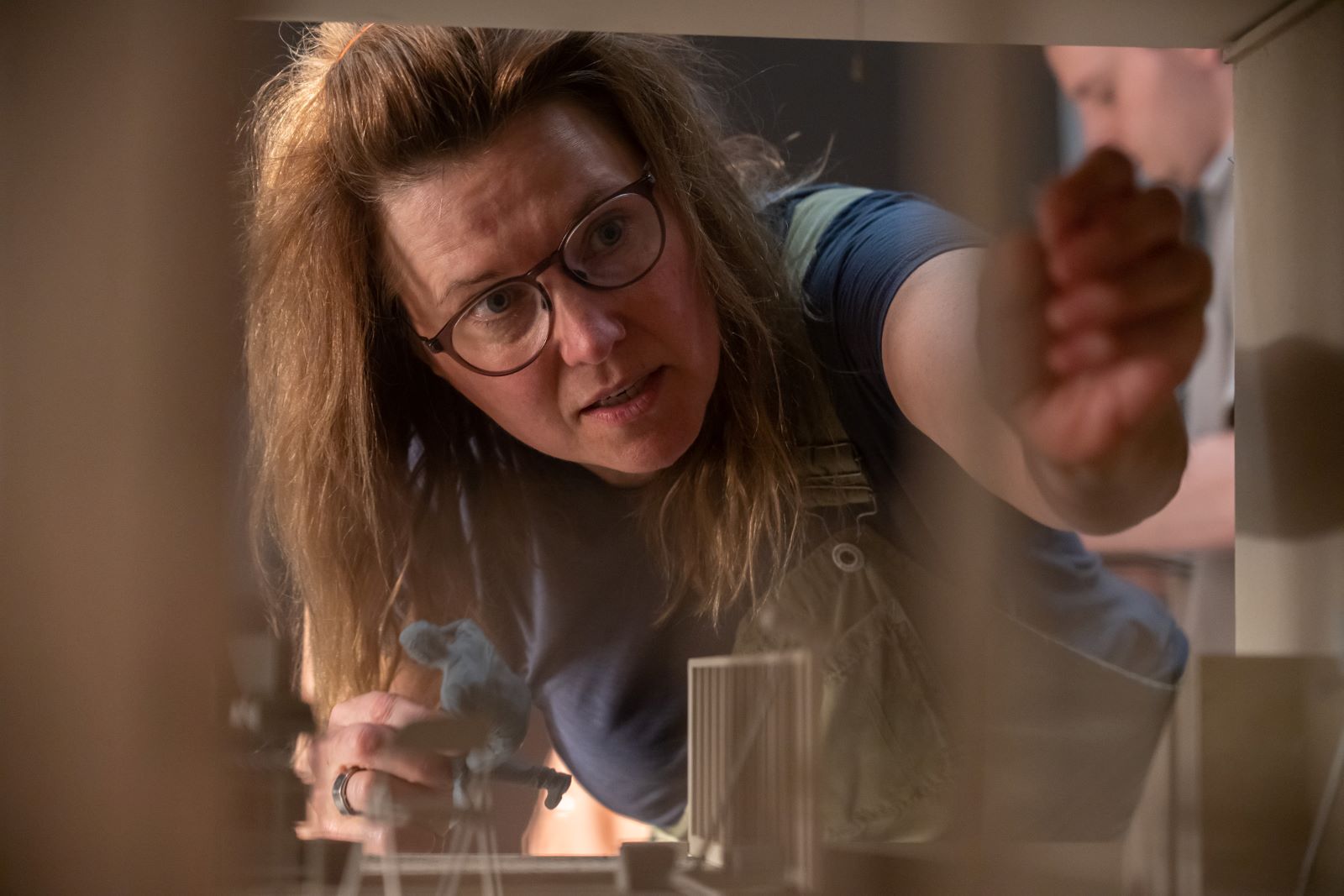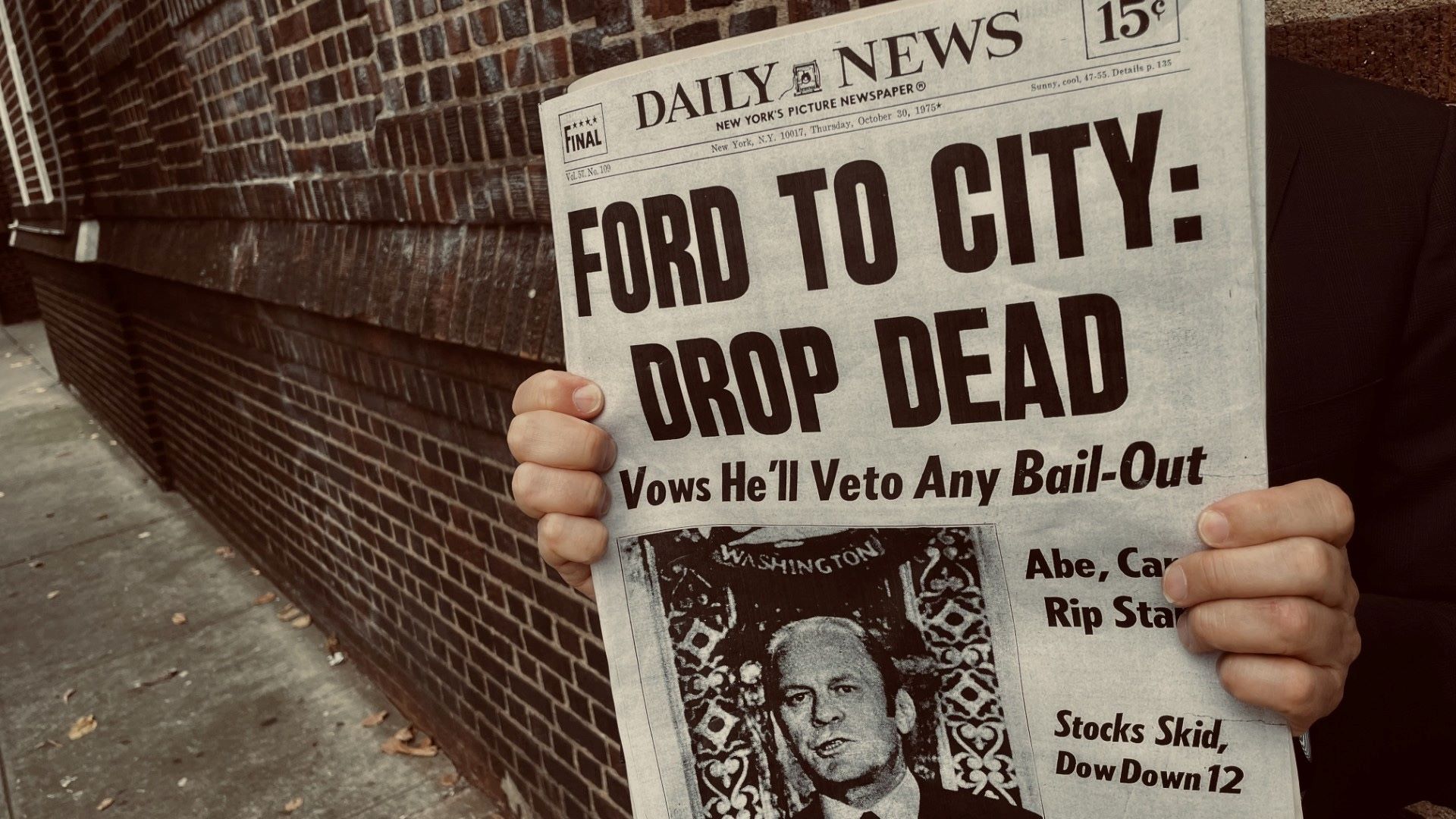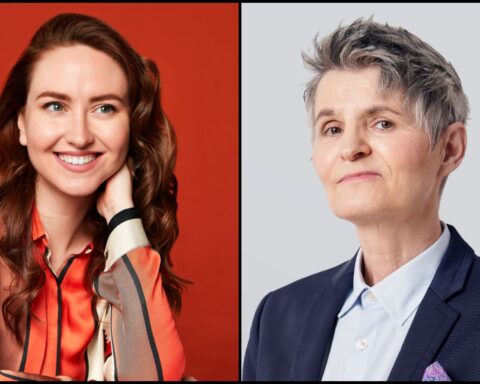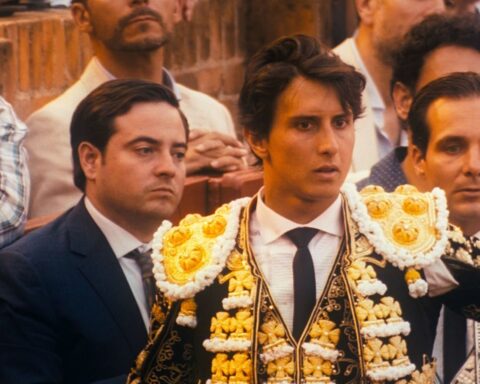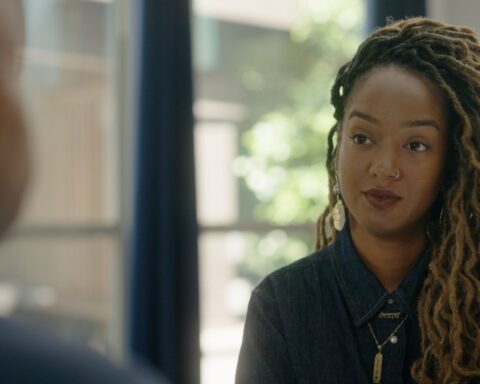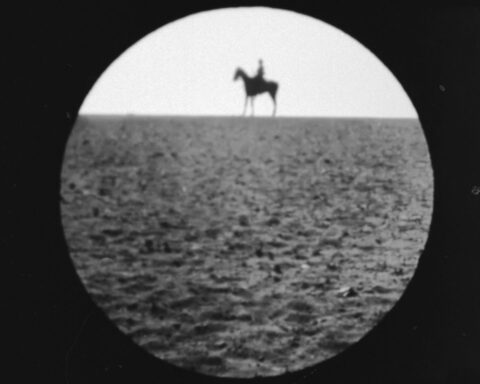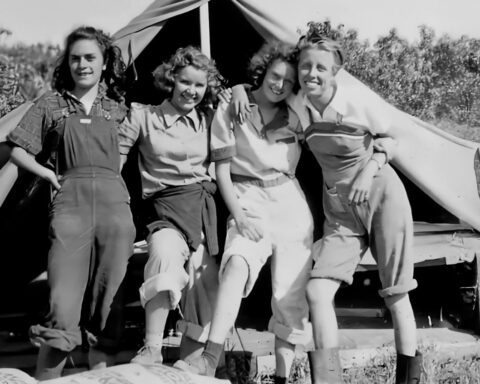“I’m very romantic about the way trains feel in cities,” says All We Imagine as Light director Payal Kapadia. “I wanted to have that in the window: the trains passing, always.”
The evening commute offers a luminous swoon in Kapadia’s first dramatic feature All We Imagine as Light. This film, which won the Grand Prix at Cannes earlier this year, pulses with the heartbeat of a bustling city as roommates Prabha (Kani Kusruti) and Anu (Divya Prabha) travel from their northern suburb to the hospital where they work in central Mumbai. Trains offer stirring metaphor for the connections that these two women crave.
Prabha is married, but her husband works in Germany. One only feels his presence in the film through his absence, except for when a mysterious rice cooker arrives in the mail from Europe. The younger Anu, meanwhile, keeps her love life a secret from her modest roommate. Anu, a Hindu, is seeing her Muslim boyfriend Shiaz on the sly. Mind you, Prabha has an affair of her own and connects with a colleague after work who recites romantic poetry during their walks. The verses of which repeat in Prabha’s mind on a loop on the train home.
This is a poetic, poignant slice of life drama in which love is both an assertion of agency and a political act. Kapadia roots the women’s story in the life of Mumbai as their friend and colleague Parvaty (Chhaya Kadam) finds her place in the city thrown into doubt following her husband’s death. This quietly political film benefits from Kapadia’s eye that reflects her documentary roots. All We Imagines as Light couldn’t be more different stylistically from Kapadia’s debut feature, the shape-shifting essay documentary A Night of Knowing Nothing, which explored a personal and collective awakening as two lovers exchanged letters amid the unrest of student protests. But both films reflect a deep sense of longing with Kapadia’s non-fiction background firmly rooting the All We Imagine as Light in the drama of daily life.
POV spoke with Kapadia via Zoom ahead of the theatrical release of All We Imagine as Light to discuss the film’s relationship to her prior work, the sights and sounds of the city, and finding the right masala to tie it together.
POV: Pat Mullen
PK: Payal Kapadia
This interview has been edited for brevity and clarity.
POV: I love seeing the contrast between your two features. A Night of Knowing Nothing is this essay documentary with layers of archive and All We Imagine as Light is more like a natural, vérité drama. How and when do you find the right form in which to tell your stories?
PK: The form is dictated by the process of the material. A Night of Knowing Nothing was kind of an archive film. We had a lot of footage and we shot a lot of footage also, but it was shot over such a long time that it felt as if all of it was found footage. It was like a large archive that we had collected. The only way I felt I could get a cohesive sense of how to put it together was the narrative and that took the form of these letters, which was a way to compress five years of time without having too information. But also to evoke the feeling of this time that all of us as students felt by having all that be archive.
In this film, I wanted to make a very proper scripted film. But of course that doesn’t always happen. While shooting, I did a lot of interviews with people randomly, which was not in the script. I had written a proper script with proper scenes, but then all the nonfiction that I was attracted to started seeping into the film. It has elements of nonfiction, but a lot of very constructed fiction. The story itself led me to the form. It starts more vérité style and goes into something dream-like.
POV: Can you give some examples of some of the nonfiction elements that sort of found their way into the film?
PK: The opening sequence traveling through Mumbai—we shot those just as the city was waking up from 4:00 AM to 7:00 AM and in Dadar market. I had done a lot of interviews with people talking about different experiences of Mumbai. Now I wanted, like in Night Knowing of Nothing, to have a voice with the images, which are not exactly illustrative. For the interviews, I couldn’t use them as they were, so I played it like the game Telephone where you take a piece of information, you give it to the next person, and they make something else out of it.
I collected materials with questions, like “What was it like the first time you came to Bombay?” But they were really rambly, so when I decided to make them into a sequence, I took all that material and then presented it to someone else who would have a similar experience. They would respond to that material from their perspective. It became a way to be more precise in the second round.
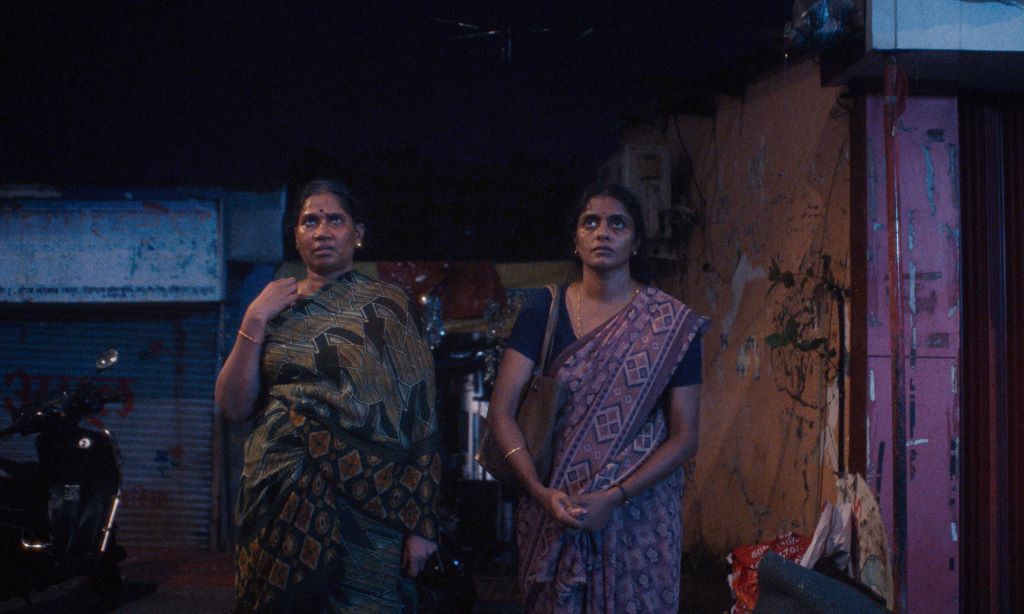
POV: Was there any event you witnessed in the city that inspired the story for All We Imagine as Light?
PK: It wasn’t one incident, but it was a lot of things. For example, for the story of Parvaty, I was born in Mumbai and as a child, I’d always remembered the area of Lower Perel and Dadar having cotton mills. That was kind of the identity of Mumbai and public spaces, which were for the workers from the cotton mills. But over the past 20 years, actually, those mills were shut down and all the spaces that were once inhabited by those workers have now been replaced by tall towers and luxury shopping malls.
The people of Mumbai should really be concerned about this because it’s a violent gentrification. It’s just very surreal and strange: that the whole skyline has changed to replace these spaces. It feels like a place that, more and more, the people who live there are contractual and have no sense of community or they’re not allowed to have a sense of community. All of these things were a concern because they change the nature of a city.
POV: What about for the relationship between Prabha and Anu?
PK: I was interested in what is considered to be a legitimate relationship. A Night of Knowing Nothing is also about love and the politics of love in India. I was at an age where a lot of my friends were getting married. Questions about who you can be with and explaining to your parents the choice you want to make were a big part of everyday life with my friends, but not myself. Even the WhatsApp pictures of the boys happened to a friend of mine. [Anu receives photos from her parents advertising prospective suitors.] She would be showing me the pictures and we would be making fun of how these guys decided to pose.
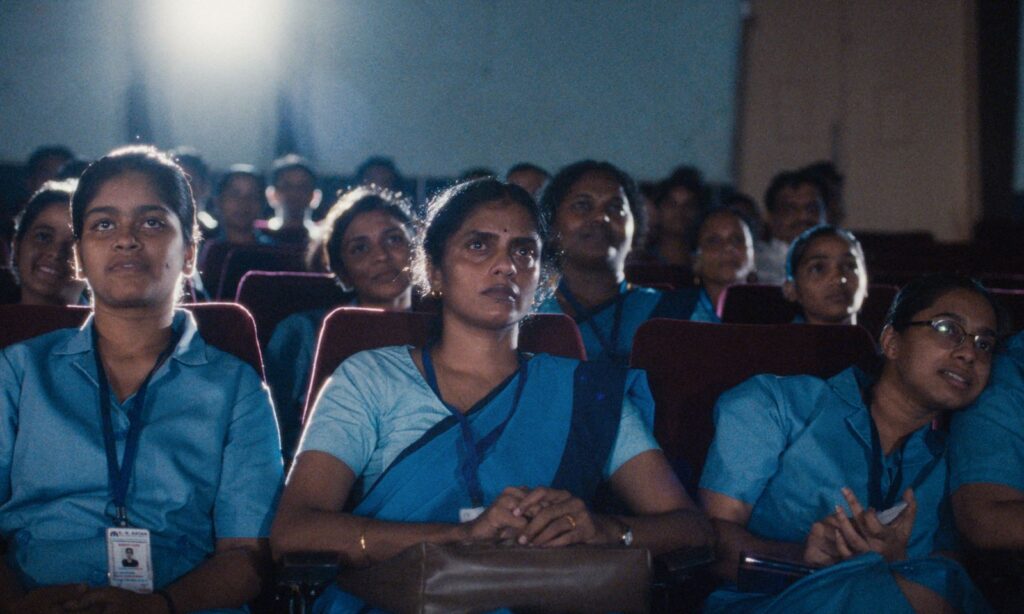
I wanted to have a film about two relationships of two different women. The older one is in a marriage, which is a bit of a weird marriage. There’s really no sense of a connection there. It’s very tenuous, but that’s considered be a legitimate relationship because it’s a marriage, while Anu [who is Hindu] who’s young and falling in love—whether she wants to be with Shiaz [who is Muslim] forever or not, it doesn’t matter. It’s her choice. But she really doesn’t have that choice because that relationship is looked at as something that is not okay. This difference gave me a deep sense of melancholy and anger and I wanted to have them both in the film.
POV: Both All We Imagine as Light and A Night of Knowing Nothing have relationships that are defined by absence. Is it a coincidence that you look distance and absence in relationships in both films?
PK: Longing is a device of a great possibility. It creates different feelings and emotions. It’s easy to have more of the woman when the man is not there. You can project a fantasy of him that may not really be him. There are a lot of men in the film who really shouldn’t be in the lives of these women, whether it’s Prabha’s husband or Parvaty’s husband who messed up with the [housing] papers and didn’t leave her name on it, or it’s the woman at the beginning of the film who’s really upset that the ghost of her husband keeps appearing. These absent men are lingering on whether the women want them to stay or not. I was thinking a lot about the absent men, but also about how the system is designed so that women can’t think of a life without them.
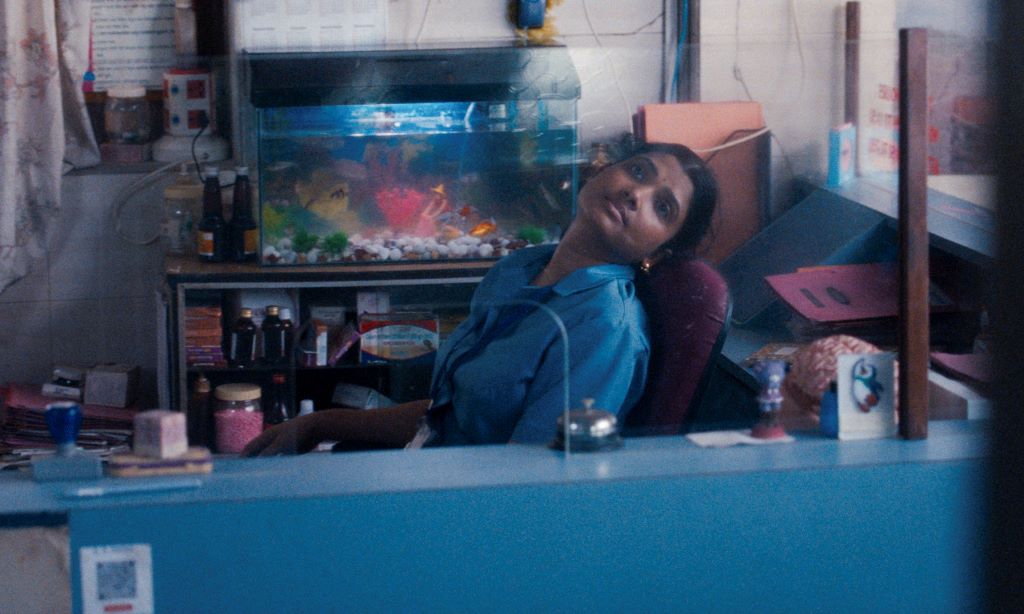
POV: What qualities or characteristics were you looking for in your actors when you were casting Prabha and Anu to create these women?
PK: One of the things that was important to me was that the people who act in the film were politically in agreement with the discourse of the film. The politics of the film needed to be something that everybody could discuss in a positive way. I like to spend a lot of time with the actors and we discuss a lot. I wanted them to be part of the process. All three actors are really amazing independent women who live in their own ways without any kind of baggage. I learned a lot from them as individuals.
The second thing that I really was interested in was having people I could collaborate with over a long period of rehearsal time so that we all be together for many weeks before the shooting and be open to working on it like a theater production where we are [workshopping] the scenes. I don’t speak the language, Malayalam, so it was hard for me to even direct them. The rehearsal was also for me. We would shoot and then we would watch it in the evenings and be like, “This doesn’t work.” A lot of scenes came out of that.
POV: Can you talk a bit more about the role of language and the interplay of dialogue between Hindi, Malayalam, and Marathi? I also like the interplay with poetry, text messages, etc., in the layers of language.
PK: I love playing with multiple languages. Even in Night of Knowing Nothing, there are two languages. There’s Hindi in the beginning and then it changes to Bangla. When she stops writing to her lover, it’s Bengali [aka Bangla]. I wanted something with language in this film because Mumbai is a city of so many different languages. Diversity in language is something that I wanted to address in a positive way. The main language between Anu and Prabha is always Malayalam. When they speak to Parvaty, they have to speak in Hindi because Parvaty’s language is Marati and Hindi becomes the joining language. [Prabha and Anu from Kerala, while Parvaty is from Ratnagiri.] But not everybody can speak Hindi, like the doctor.
Not knowing the language of a place alienates you and makes you feel lonely, and that’s what happens to the poor melancholic colleague, Dr. Manoj, who has to leave because he can’t adjust. But language also creates a sense of privacy when Anu is saying something really sexual to Shiaz and no one else can understand. There are all these elements of big city life and language, which I love. It felt authentic to have multiple languages. There’s also this whole discourse about Hindi being the national language in India, but a large population doesn’t speak it. I wanted to remember that.
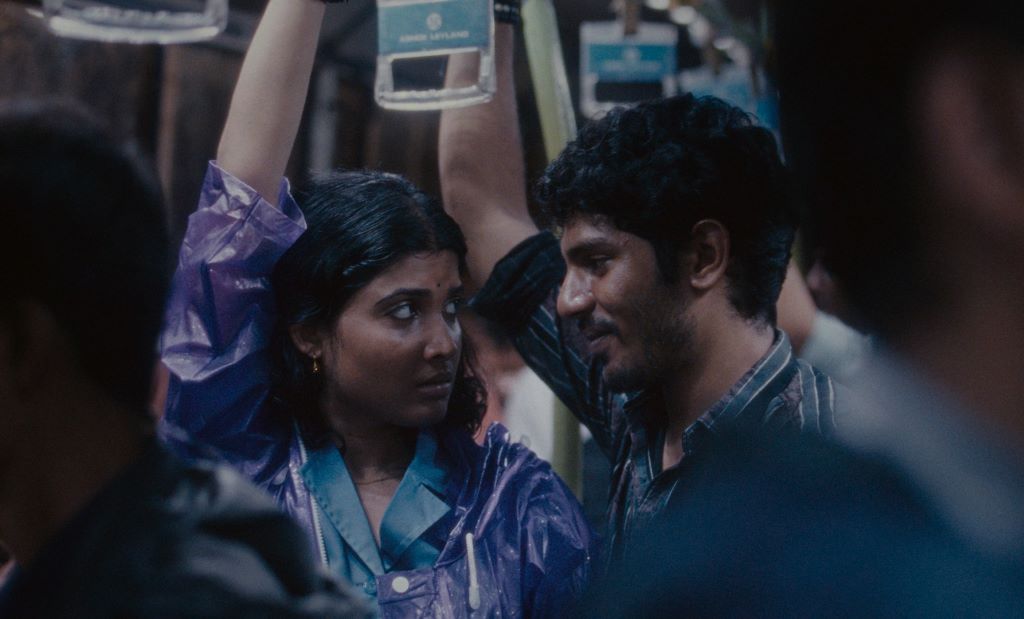
POV: With Mumbai being such a large and diverse city, what guided the locations that you chose to represent the city?
PK: I was always interested in always having the train as one of the important motifs in the film, whether it’s inside the train or the sound of the train or the skywalk that is built to go to the train. It’s always outside the windows in the apartment of Anu and Prabha. We had to find a location where the metro line was just outside the window. The metro line is in the really far suburbs. Otherwise all the other trains are overground, not in the sky like that. It’s in more northern part of Mumbai and no one can live in the area that they work because it’s super expensive. It’s like Manhattan. So they would have to go really north and stay there. We chose Dahisar as the suburb because the railway line goes through there.
The other locations, like the hospital, I set in a south central part of Mumbai called Lower Perel and Dadar, which is where Parvaty’s apartment is. There are shots where you see her and the buildings at the back and the slums at the bottom. That is the area where cotton mills used to be. It’s a slum, and in the middle of it is Parvaty’s apartment, which is probably the last standing housing of that kind left in that area. There’s a particular kind of housing that was made for the workers of the mills, which were called chawls. When you look at Mumbai now, those are completely gone. A lot of people did get housing, so that’s positive because the chawls were not the best living conditions, but a lot of people didn’t they were swindled out of their property. These were all the spaces that we decided to situate the film in.
POV: The film has such a great eye for the city and these dynamics at play. While reading out your film, I see so many critics making comparisons to Wong Kar-wai. How do you feel about that comparison?
PK: Wong Kar-wai! [Laughs and makes an exaggerated flattery gesture.] What is there not to like about Wong Kar-wai? It’s great. I love early Wong Kar-wai, more Chungking Express and Fallen Angels, but also early Tsai Ming-liang. Rebels of the Neon God is a film that I love a lot and early Edward Yang, Taipei Story—all city films that inspire me. I like the early films of these filmmakers, because they’re a bit rough around the edges.
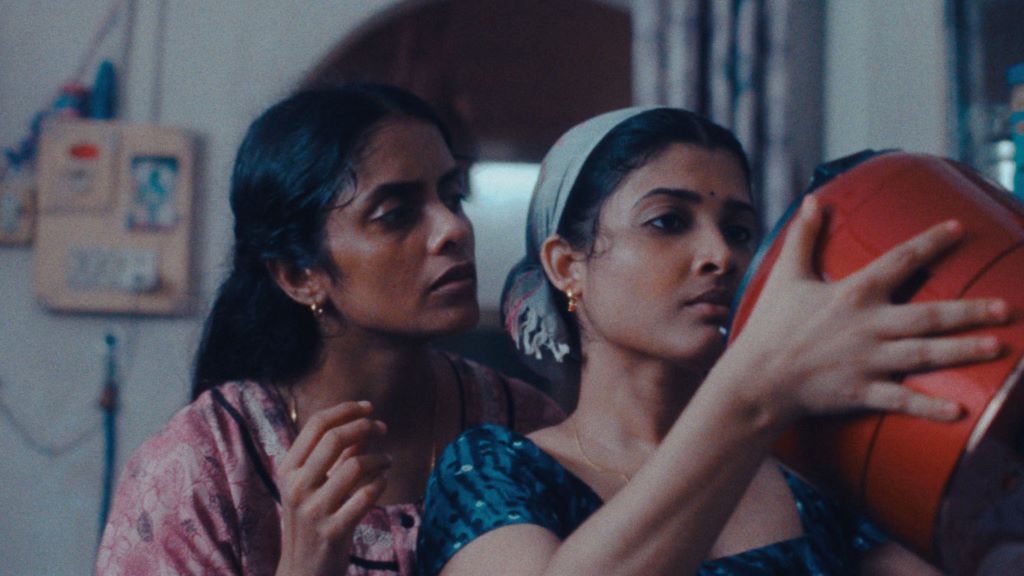
POV: The Wong Kar-wai comparisons I read usually talked specifically about cities, but I felt his influence in the use of food in All We Imagines as Light, like the way that In the Mood for Love has the noodles as a metaphor for loneliness. We often see Prabha cooking, and her husband sends her this fancy rice cooker that she never uses.
PK: Food is very central part of Asian life. We are always eating or talking about food or what we are going to eat next. I think it’s true of India also. We’re just obsessed with food, especially Malayalis. They’re really specific about their food. I cannot not talk about food. It’s a good influence to have.
POV: But speaking of influences, this film looks at different women in the workplace and your mother is a video artist. What influence did she have on your eye for visual storytelling?
PK: She worked in a way that was quite homegrown, which had a feeling of collage. She would work with different elements, whether it was using handmade animation, drawings, video, or super impositions and mistakes and glitches. There was a kind of freedom in her work, which made me look at cinema to have different layers that are not necessarily shot, but can have drawings and texts. All these different things to put into the, now that we’re using a food metaphor, masala of the curry.
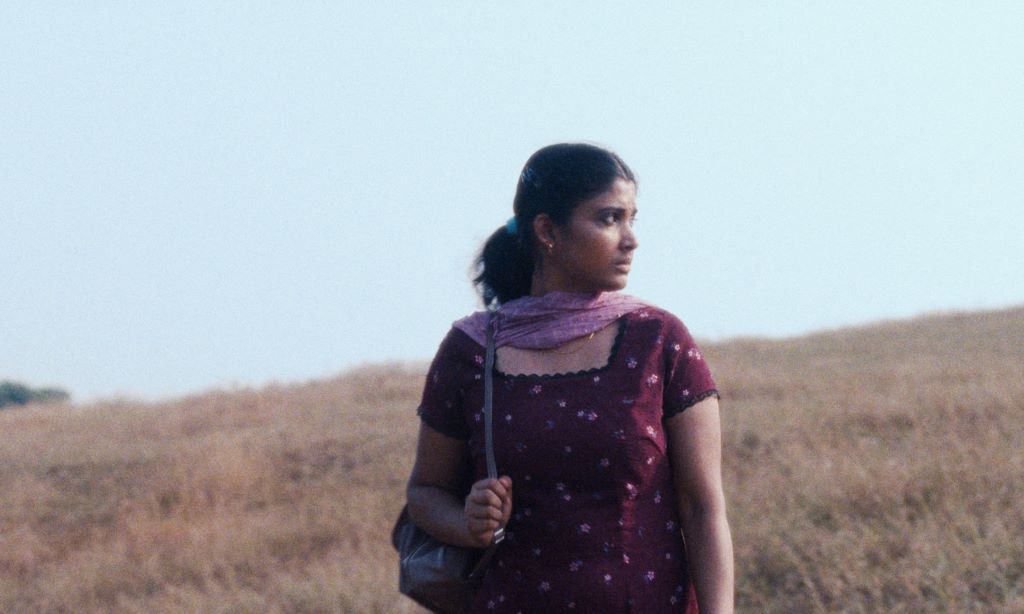
POV: All We Imagine as Light also has layers in the locations. It has two acts, one in the city and then one in the country when Prabha and Anu follow Parvaty back home to Ratnagiri. There’s a real sense of release, so how did you approach the different regions?
PK: The problem is that I watch too many European films. They have all these different seasons and or even American films where they say, “Ah, New York in autumn.” We don’t have any seasons where I live. It’s just monsoon and then it’s hot. So I had to have two seasons in the film. I chose the rain for the city because the feeling of light changes how you feel: how you feel when the sun is out and how you feel when it’s cloudy. It affects your mood—at least I like to believe that. In the monsoon season, it’s really sticky. It rains, but the rain is not nice. It’s soupy and just before it rains, everybody’s really sweating a lot because the humidity has reached an incredibly high level. You feel like as if you’re stuck.
I wanted this feeling of the monsoon because it also worked with the script and how everybody is feeling at this point. I wanted to have this nature of Mumbai and then the second half to be really bright, almost as if the details are completely gone. You just have this bleached-out white look with the sun being so harsh, but it also creates this kind of flare, which becomes dreamy. I thought I could stretch that into a super long evening, which is almost like a magic hour that never ends.
POV: Throughout the film, the characters talk about home and where there from. There’s disconnect, like how Prabha has lived in Mumbai for years but don’t call it home. How has this film developed your idea of home?
PK: Home is where your friends are and that is home for me.




